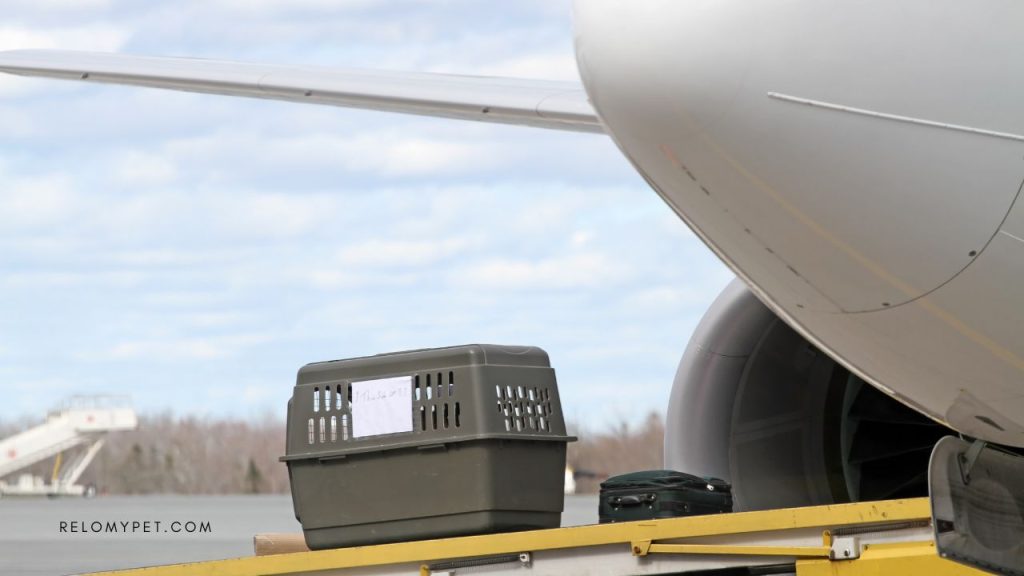Pet Transportation Roadblocks
Table of Contents
The Main Obstacles of Moving Your Pet Abroad.
Few things in life are better than a well-executed plan. And it’s even better when that plan involves moving your beloved pet across the world or country. Sadly though, things don’t always go according to plan, and this is still true when dealing with international pet transport. From pet scams to knowing how to ship dogs, the process can be daunting. So, today we’re going to take a look at pet transportation roadblocks and discuss everything you need to know.

Routing or Policy Changes.
Pet travel plans can be complicated and easily disrupted by sudden changes in policy, whether from airlines or governmental bodies. For Relopet International’s team, reworking travel arrangements due to new breed embargos or other disruptions that affect the availability of flights for their animal clients is a common occurrence. Recently, the major challenge has been the elimination of some pet programs and global flight routes.

The ongoing COVID-19 pandemic serves as a prime example of how external factors can affect travel plans. After all, it impacted almost every aspect of daily life, including the transport of pets. As a result, many airlines that Relopet International partners with had decided to temporarily suspend their pet programs. On top of airline closures, the team also had to closely monitor country shutdowns and regulatory changes that could affect the transport of animals.
Clients in such situations should understand that some variables may be beyond their control and that of their relocation coordinator. However, Relopet International strives to keep itself abreast of the available options by finding creative solutions that may be suggested to navigate the constantly evolving travel landscape. While most airlines have lifted restrictions, some areas may still be limited to certain ports, necessitating new routes and timelines. Unfortunately, these changes can result in additional costs, but the team’s primary objective remains the safe and timely reunification of pets with their owners.

Airline Restrictions.
Airlines have their own regulations regarding pet transportation, such as the size and weight of the pet and the type of carrier that can be used. Some airlines also have breed restrictions, meaning that certain breeds of dogs and cats cannot be transported on their planes.
Weather Embargoes.
Weather embargoes pose a significant challenge to pet travel, with summer heat being the most prevalent type. As airlines prioritize animal safety, they may reject pet flight bookings if the temperature at takeoff or arrival exceeds a specific limit, usually around 80 degrees Fahrenheit (26.6 Celsius). Airlines typically make these decisions based on the temperature patterns of the previous year, but weather is often unpredictable and can change at a moment’s notice.
In case of any unexpected temperature spikes, pet travel plans may need to be delayed or adjusted, with additional fees incurred. Moving your pet’s travel date to a cooler season, like autumn or spring, can significantly reduce the likelihood of such disruptions. However, if that’s not possible, pet parents should remain flexible and be prepared for potential changes and extra expenses.

There are several unexpected costs that can arise from weather embargoes. For example, some airlines may offer pet spots on their cargo-only flights during the summer, departing well after sunset and arriving during non-peak hours to avoid temperature restrictions. However, these flights may incur after-hours fees for services like pick-up, check-in, customs clearance, and delivery that fall outside of normal office hours.

Additionally, when your pet is traveling by air, they will require a health certificate that is valid for a limited number of days, depending on the destination. If there is an unexpected heat spike on the day of your pet’s travel, this paperwork may need to be re-issued, requiring your veterinarian’s fees, along with endorsement fees. Being aware of such unforeseen expenses can help pet parents better plan for their pet’s travel and avoid any unpleasant surprises.
Cost.
Pet transportation can be expensive, especially if it involves air travel or long-distance road trips. The cost can include transportation fees, vet visits, health certificates, and accommodations, among others.
Pet Health Issues.
If a pet has any health issues or requires special care, it may not be possible to transport them. Certain conditions may require a pet to travel with a vet or may require additional documentation.
Quarantine Restrictions.
Some countries require pets to be quarantined upon arrival to prevent the spread of diseases. This can be challenging for both the pet and the owner, as it may involve additional travel and time away from the pet.
Be Prepared and Call Us for Help!

In conclusion, unforeseen circumstances like weather embargoes and policy changes can disrupt pet travel plans. However, with careful planning and flexibility, pet parents can avoid most issues that may arise. That being said, there’s no better way to ensure a smooth and stress-free pet relocation than to work with experts who have extensive knowledge and experience in pet transportation.
At Relopet International, we specialize in pet relocation and have the expertise to navigate any obstacles that may arise during your pet’s travel. Give us a call today to ensure your furry friend travels safely and comfortably to their new home.
